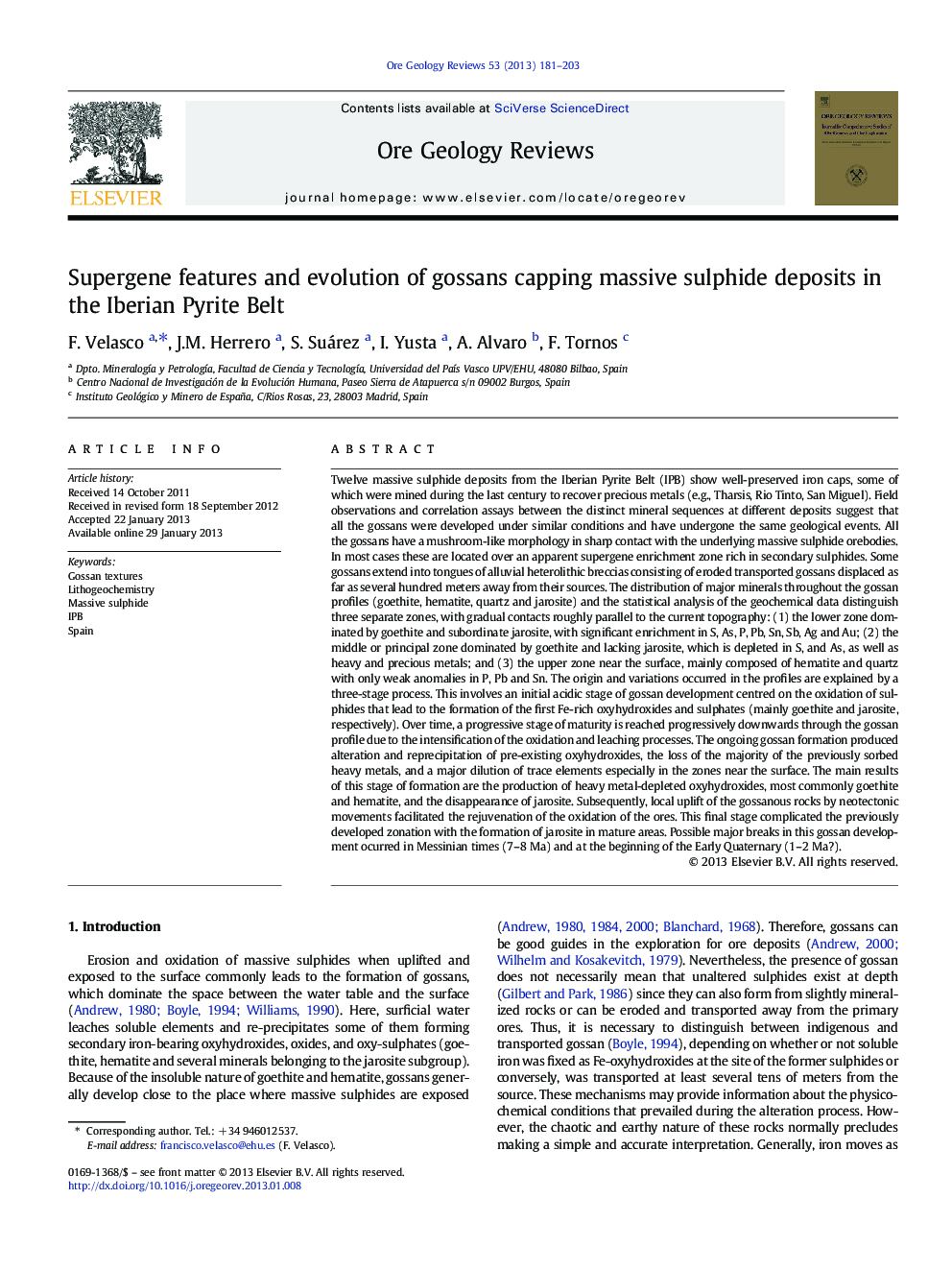| کد مقاله | کد نشریه | سال انتشار | مقاله انگلیسی | نسخه تمام متن |
|---|---|---|---|---|
| 4697545 | 1637250 | 2013 | 23 صفحه PDF | دانلود رایگان |

Twelve massive sulphide deposits from the Iberian Pyrite Belt (IPB) show well-preserved iron caps, some of which were mined during the last century to recover precious metals (e.g., Tharsis, Rio Tinto, San Miguel). Field observations and correlation assays between the distinct mineral sequences at different deposits suggest that all the gossans were developed under similar conditions and have undergone the same geological events. All the gossans have a mushroom-like morphology in sharp contact with the underlying massive sulphide orebodies. In most cases these are located over an apparent supergene enrichment zone rich in secondary sulphides. Some gossans extend into tongues of alluvial heterolithic breccias consisting of eroded transported gossans displaced as far as several hundred meters away from their sources. The distribution of major minerals throughout the gossan profiles (goethite, hematite, quartz and jarosite) and the statistical analysis of the geochemical data distinguish three separate zones, with gradual contacts roughly parallel to the current topography: (1) the lower zone dominated by goethite and subordinate jarosite, with significant enrichment in S, As, P, Pb, Sn, Sb, Ag and Au; (2) the middle or principal zone dominated by goethite and lacking jarosite, which is depleted in S, and As, as well as heavy and precious metals; and (3) the upper zone near the surface, mainly composed of hematite and quartz with only weak anomalies in P, Pb and Sn. The origin and variations occurred in the profiles are explained by a three-stage process. This involves an initial acidic stage of gossan development centred on the oxidation of sulphides that lead to the formation of the first Fe-rich oxyhydroxides and sulphates (mainly goethite and jarosite, respectively). Over time, a progressive stage of maturity is reached progressively downwards through the gossan profile due to the intensification of the oxidation and leaching processes. The ongoing gossan formation produced alteration and reprecipitation of pre-existing oxyhydroxides, the loss of the majority of the previously sorbed heavy metals, and a major dilution of trace elements especially in the zones near the surface. The main results of this stage of formation are the production of heavy metal-depleted oxyhydroxides, most commonly goethite and hematite, and the disappearance of jarosite. Subsequently, local uplift of the gossanous rocks by neotectonic movements facilitated the rejuvenation of the oxidation of the ores. This final stage complicated the previously developed zonation with the formation of jarosite in mature areas. Possible major breaks in this gossan development ocurred in Messinian times (7–8 Ma) and at the beginning of the Early Quaternary (1–2 Ma?).
Journal: Ore Geology Reviews - Volume 53, September 2013, Pages 181–203